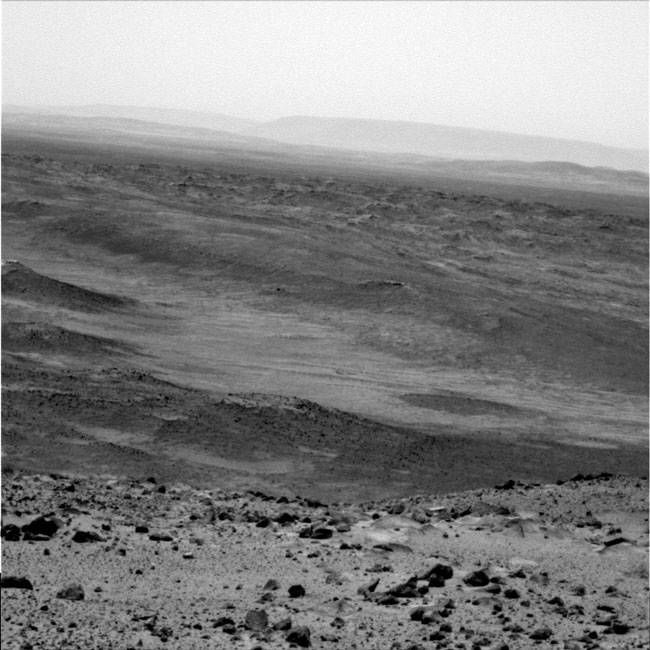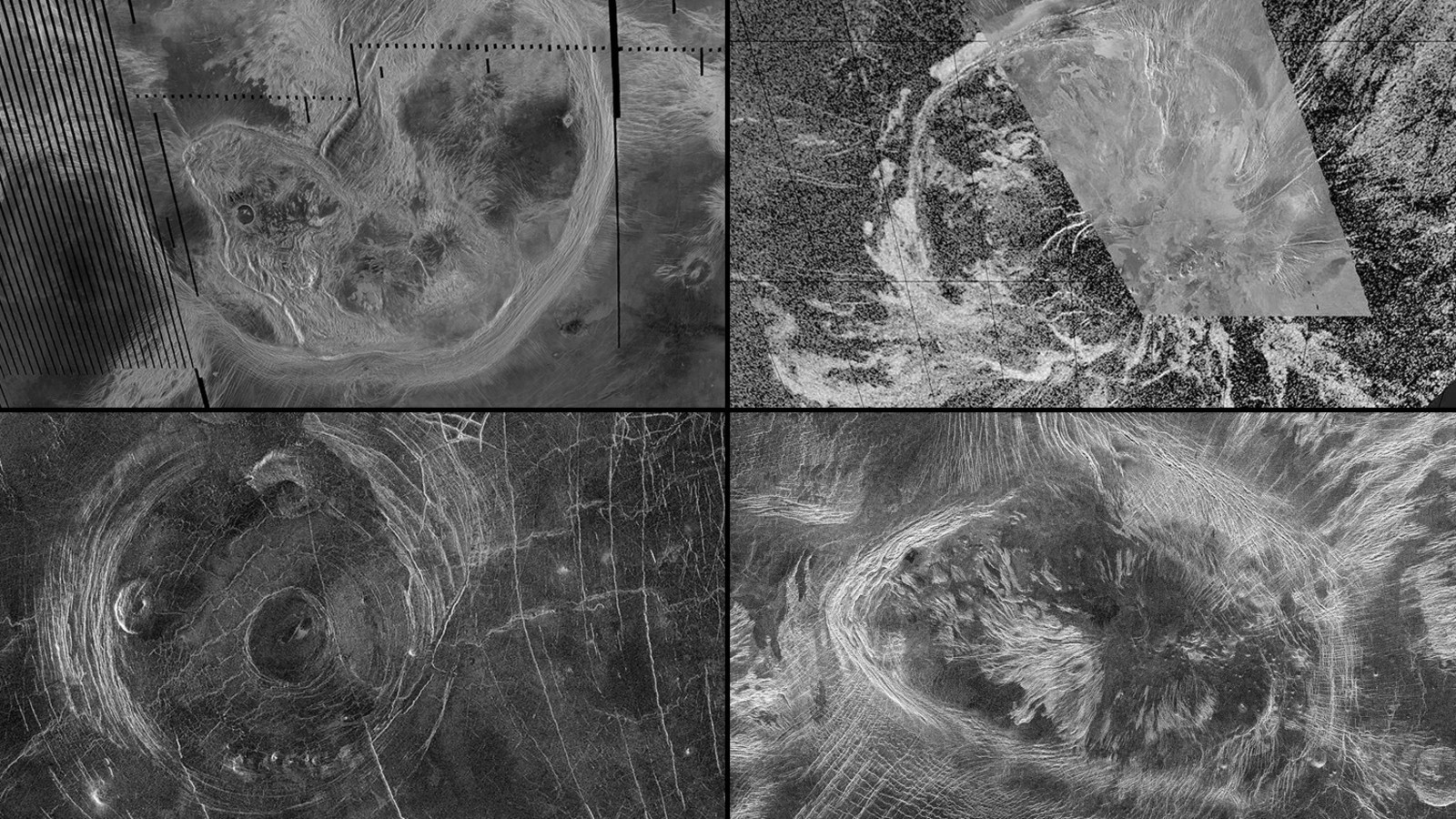Mars Spirit Rover Makes the Grade

BOULDER, Colorado - On Mars, the driving is good.
NASA's Spirit rover is sitting atop the summit of Husband Hill, with rover scientists and engineers overjoyed in achieving the exploration high point.
Spirit's climb and arrival at the summit is a milestone, said William Farrand, a research scientist at the Space Science Institute here. He is also a member of the Mars Exploration Rover science team.
"When we started the mission, if anyone had told us that we would not only drive all the way over to the Columbia Hills, but also drive to the highest point there, I think we would not have really believed it," Farrand told SPACE.com.
Farrand said that a lot of credit goes to the rover planners--the engineers who plot out the drives and movements of the instrument-tipped mechanical arm carried by each of the Mars rovers.
"They've done a fabulous job with both rovers and getting Spirit to the 'top of the hill' is an amazing accomplishment," Farrand added.
Next steps
Get the Space.com Newsletter
Breaking space news, the latest updates on rocket launches, skywatching events and more!
As Spirit sits atop the summit of Husband Hill, decisions are being made as to next steps.
"It is a rather broad, flat summit so there is not likely to be one good place for a single 360-degree panorama," Farrand noted. "We might do several panoramas from several spots on the borders of the summit plateau."
From its new lookout point, Spirit can image down into the "inner basin" to the south.
"This has been a long range target for us. We have all been intrigued by the orbital images of [this area] and it is something to finally get a 'rover's eye' view of...although, we haven't gotten the greatest view down there even yet. But soon we should," Farrand said.
The summit itself will provide good science, Farrand said, specifically as to wind transport of fine grained materials. "There seem to be some pretty impressive dunes at the top. What we'll see in terms of rock outcrops is still to be determined," he said.
Home Plate
The inner basin area of the Columbia Hills contains a broad range of interesting geological targets, including the feature dubbed "Home Plate" and other possible layered outcrops. These features suggest that the hills contain rock layers. Spirit might investigate the layers to determine whether they are water-deposited sedimentary rock.
Mars rover science teams are prepared to do a "full summit campaign" of observations, said Larry Crumpler, a member of the Mars rover science team. He is also research curator in volcanology and space sciences at the New Mexico Museum of Natural History and Science in Albuquerque.
Spirit is roughly a kilometer from the east side of the basin on the way to Home Plate. The rover drive to reach that area might take a few months, Crumpler said.
Now that Spirit has made the grade, so to speak, getting down from Husband Hill is another matter. Rover controllers are scouting out the best route for the robot to descend, Crumpler explained.
Strategy at the summit
The Spirit rover team declared victory in reaching the summit earlier this week.
"A round of applause went up for the rover drivers," Crumpler told SPACE.com.
The first panoramic camera images have already been received on Earth, Crumpler said, and they are "going to be spectacular."
The strategy at the summit, Crumpler said, is to use all of the rover's instruments to observe the soils, rocks, and atmosphere, including observations of Mars' two moons - Phobos and Deimos.
"Then we may move to the south side of the summit to get a full resolution image of the basin to the south. We hope to study the peculiar feature, Home Plate, in the future, as well as get some good images of the possible pathway down the hill to the basin," Crumpler said.
Following that, the rover will likely wheel back, possibly to the absolute summit to do more camera work, Crumpler added, including scanning back at Larry's Lookout in the valley to the north. Along the circuit, rover science team members will examine rock targets as they appear of interest. Next, in many sols (Mars days) to come no doubt, he added, the robot will start down the east side of Husband Hill.
Alive and well hypotheses
Another member of the Mars rover science team is David Des Marais, an astrobiologist at NASA's Ames Research Center, Moffett Field, California.
Des Marais said Spirit's tour-of-duty at the summit may offer clues as to what Husband Hill is in the first place. He said a suite of hypotheses about the origin of Husband Hill are "still quite alive and well," Des Marais noted.
They include that Husband Hill is a possibly a volcanic mount; an ancient layered crater floor deposit; or perhaps the leftovers of an uplifted crater rim with a mixture of materials having various origins.
Des Marais said that the best opportunity to decipher how Husband Hill formed will likely come from examination of the rocky units that may adorn the southern flanks of the hill.
As Spirit surveys its Gusev crater site, the robot's twin -- the Opportunity Mars rover -- is exploring Meridiani Planum on the other side of the planet.
Opportunity is wheeling its way toward Erebus Crater, a feature some 330 feet (100 meters) in diameter.
Both robots reached Mars in January 2004 and have far surpassed their initial warranty of 90-days.
- Mars Rover Special Report
Join our Space Forums to keep talking space on the latest missions, night sky and more! And if you have a news tip, correction or comment, let us know at: community@space.com.

Leonard David is an award-winning space journalist who has been reporting on space activities for more than 50 years. Currently writing as Space.com's Space Insider Columnist among his other projects, Leonard has authored numerous books on space exploration, Mars missions and more, with his latest being "Moon Rush: The New Space Race" published in 2019 by National Geographic. He also wrote "Mars: Our Future on the Red Planet" released in 2016 by National Geographic. Leonard has served as a correspondent for SpaceNews, Scientific American and Aerospace America for the AIAA. He has received many awards, including the first Ordway Award for Sustained Excellence in Spaceflight History in 2015 at the AAS Wernher von Braun Memorial Symposium. You can find out Leonard's latest project at his website and on Twitter.
